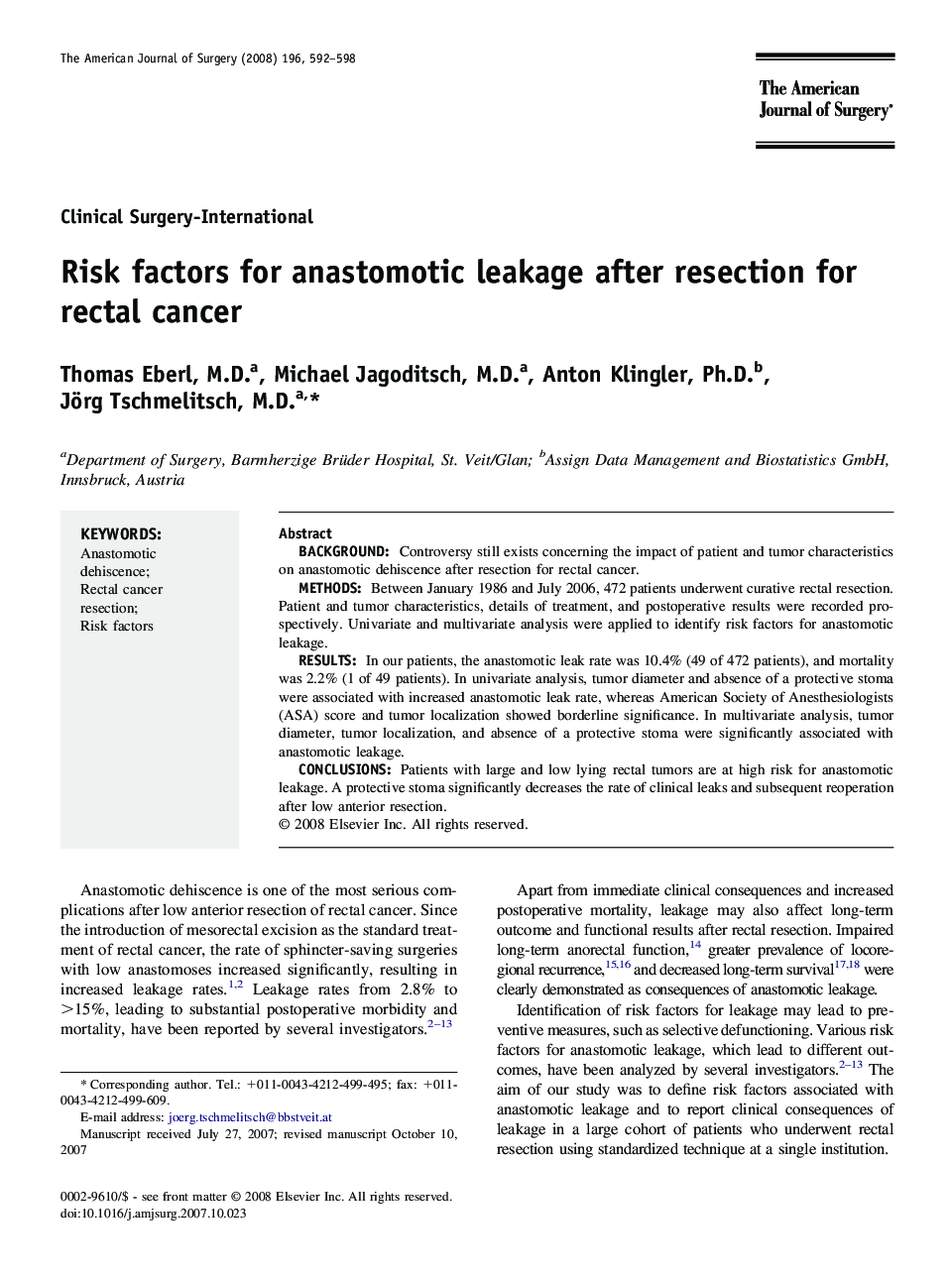| Article ID | Journal | Published Year | Pages | File Type |
|---|---|---|---|---|
| 4281123 | The American Journal of Surgery | 2008 | 7 Pages |
BackgroundControversy still exists concerning the impact of patient and tumor characteristics on anastomotic dehiscence after resection for rectal cancer.MethodsBetween January 1986 and July 2006, 472 patients underwent curative rectal resection. Patient and tumor characteristics, details of treatment, and postoperative results were recorded prospectively. Univariate and multivariate analysis were applied to identify risk factors for anastomotic leakage.ResultsIn our patients, the anastomotic leak rate was 10.4% (49 of 472 patients), and mortality was 2.2% (1 of 49 patients). In univariate analysis, tumor diameter and absence of a protective stoma were associated with increased anastomotic leak rate, whereas American Society of Anesthesiologists (ASA) score and tumor localization showed borderline significance. In multivariate analysis, tumor diameter, tumor localization, and absence of a protective stoma were significantly associated with anastomotic leakage.ConclusionsPatients with large and low lying rectal tumors are at high risk for anastomotic leakage. A protective stoma significantly decreases the rate of clinical leaks and subsequent reoperation after low anterior resection.
